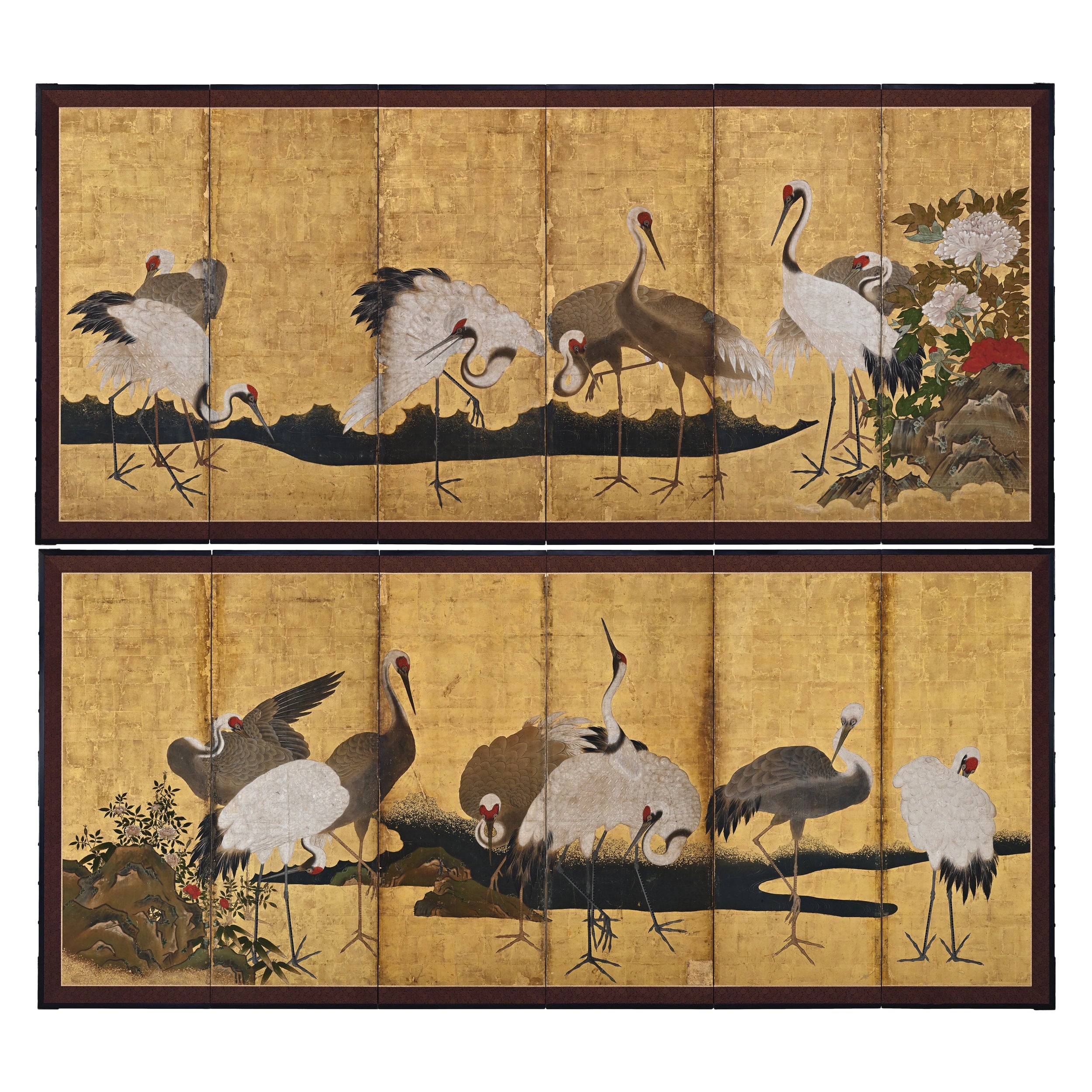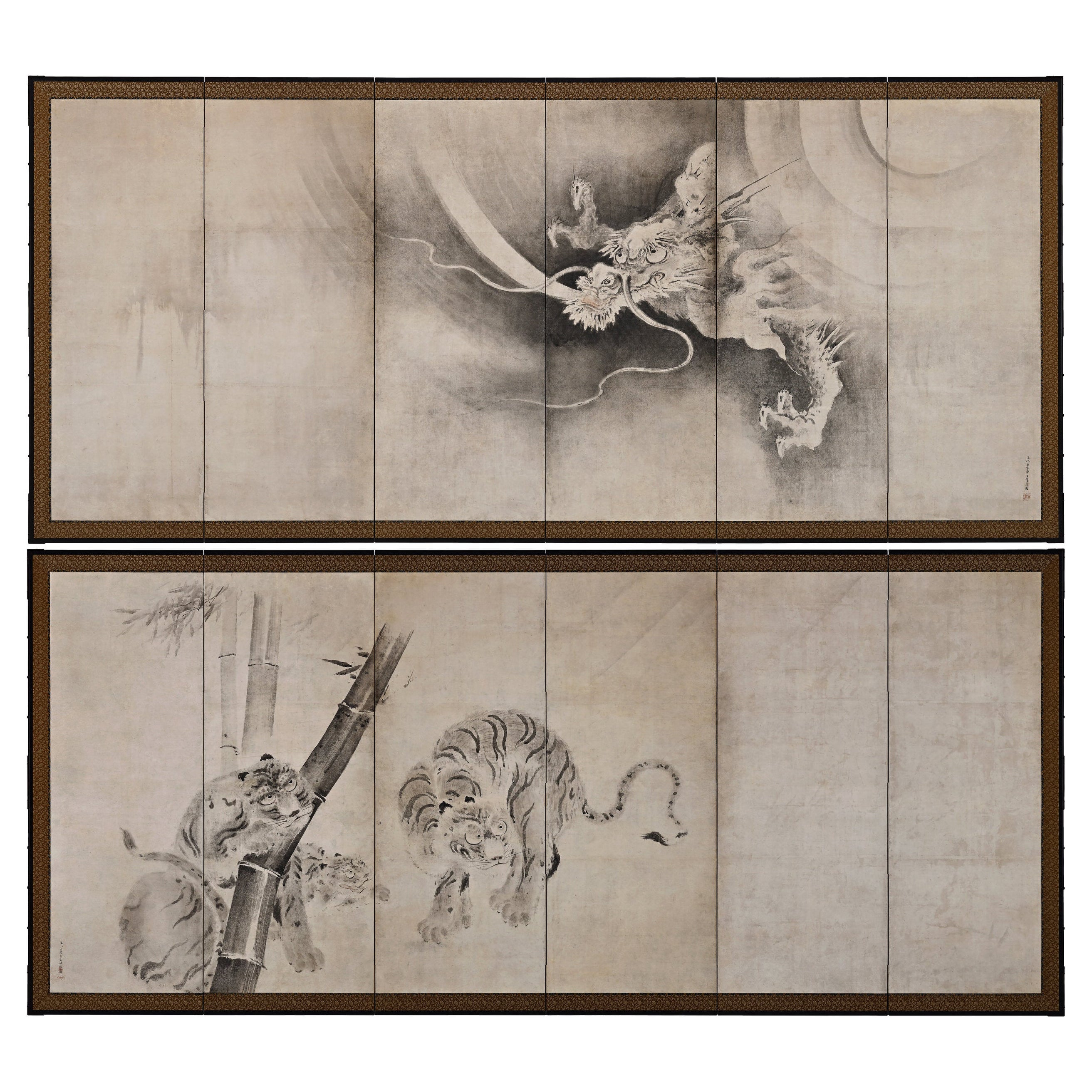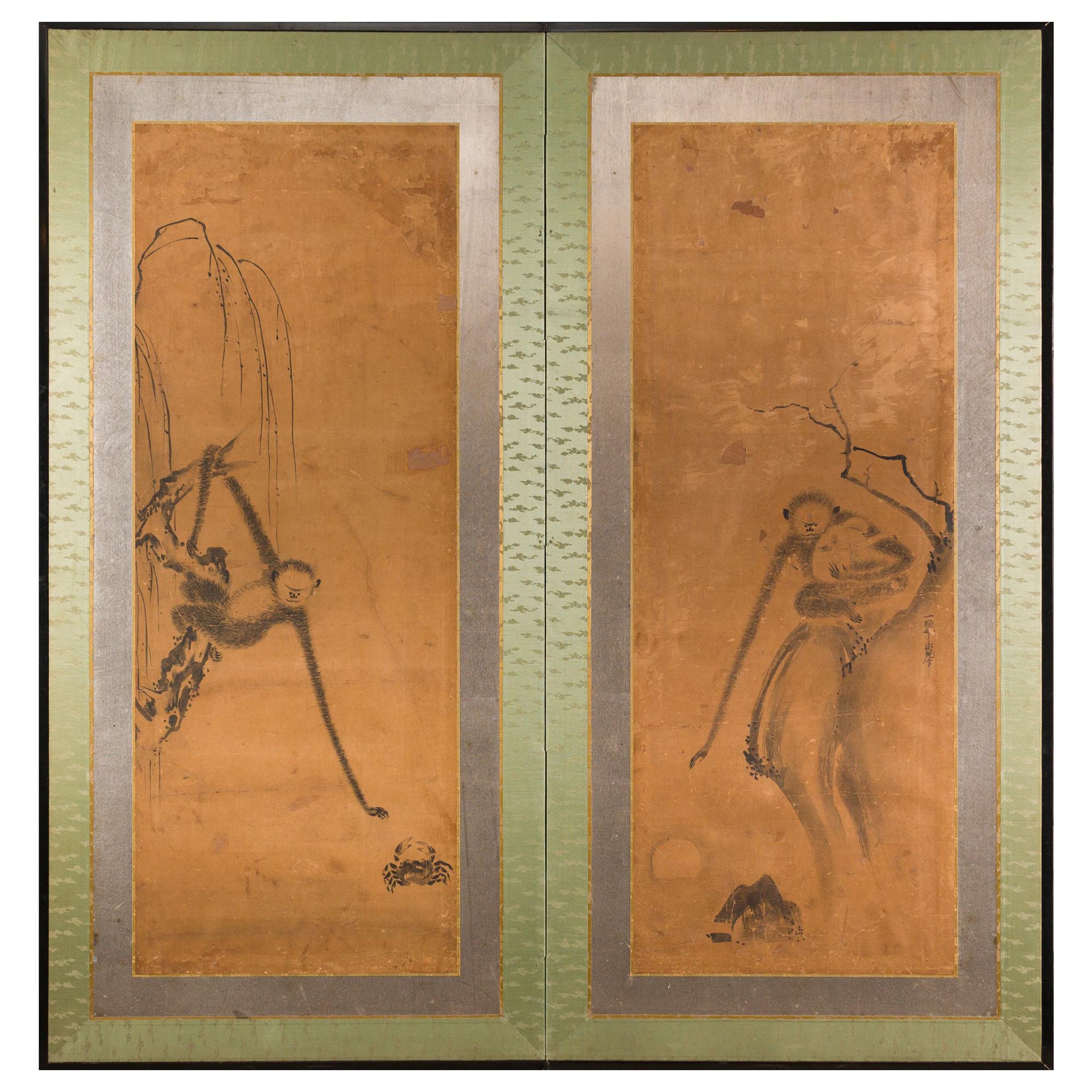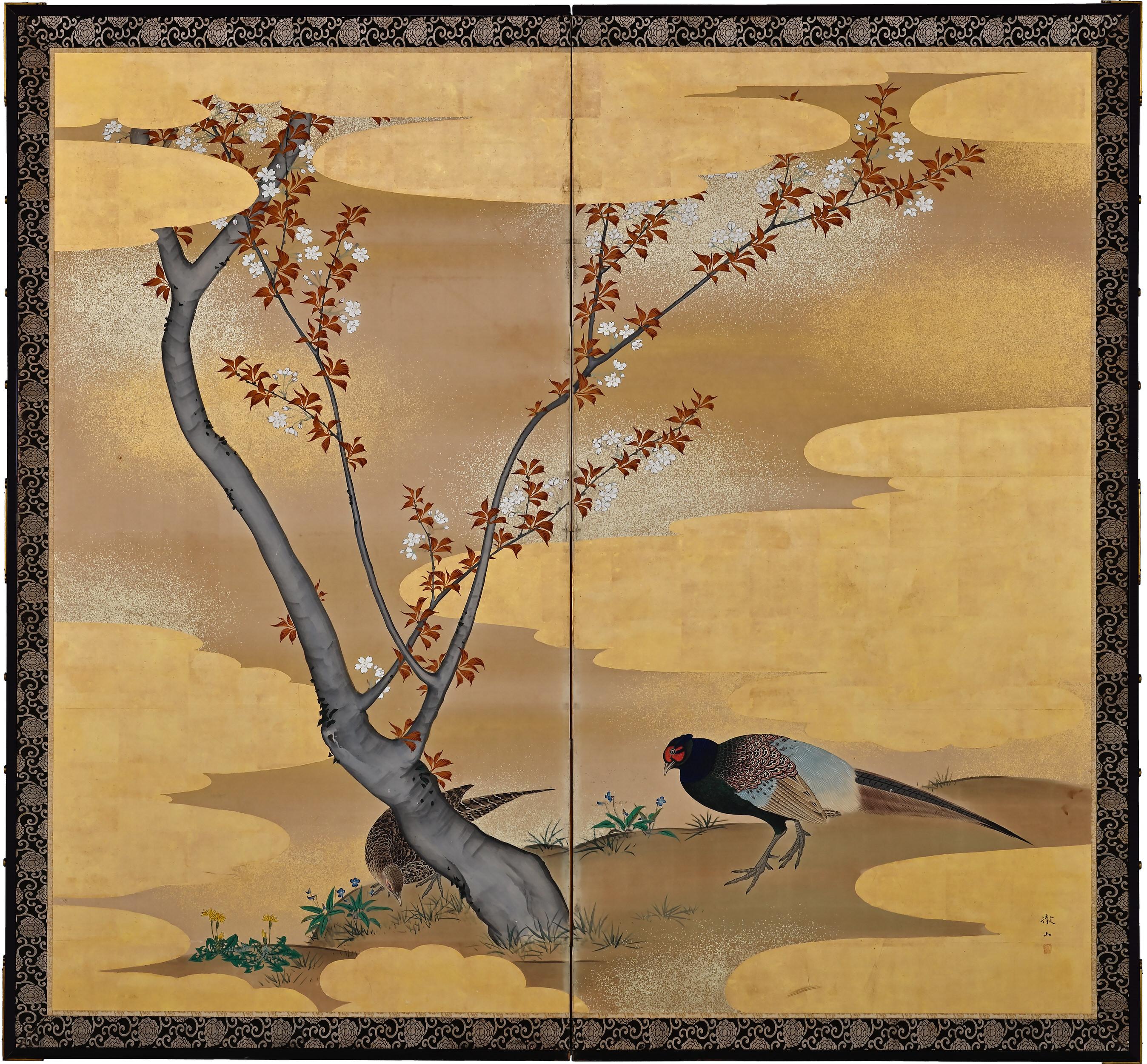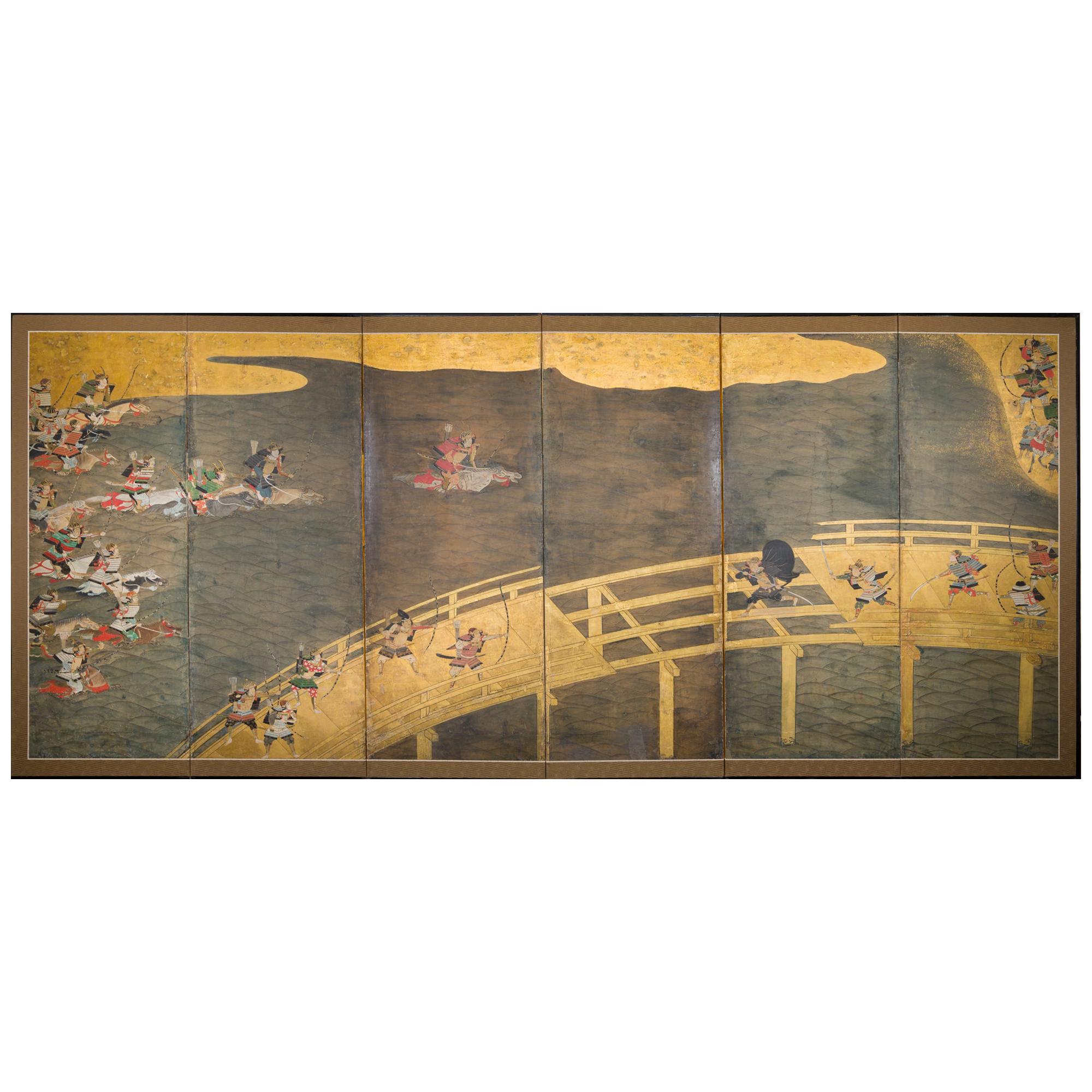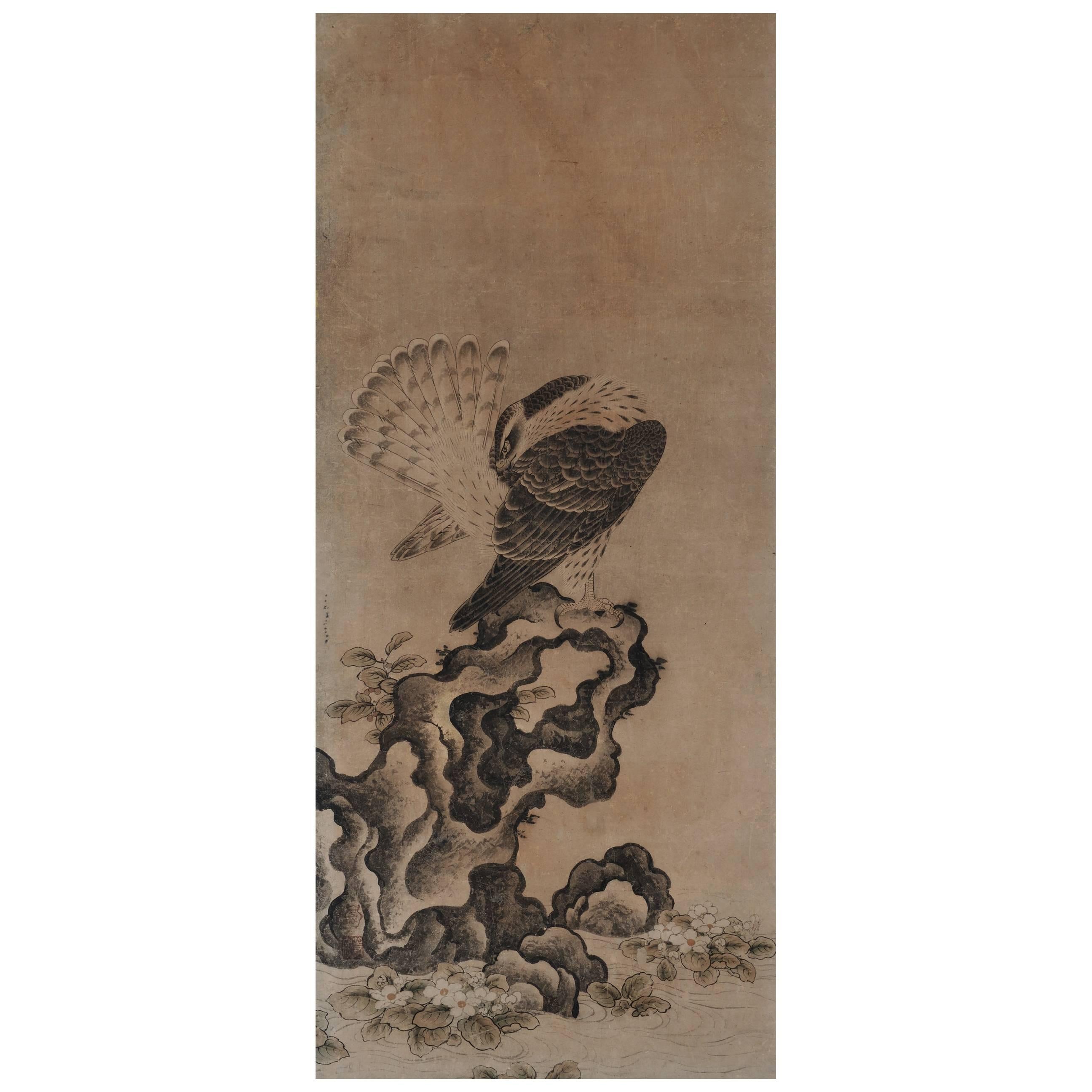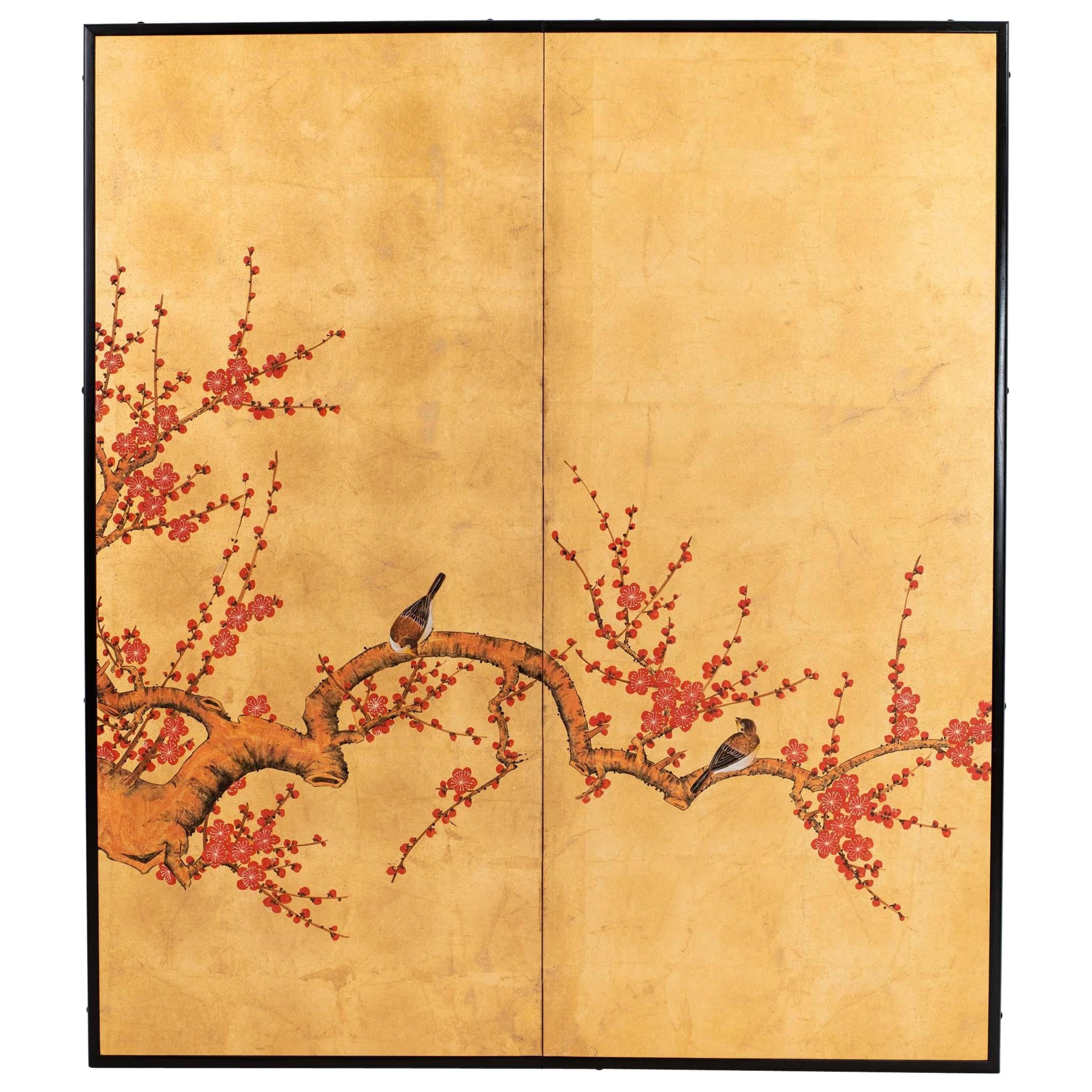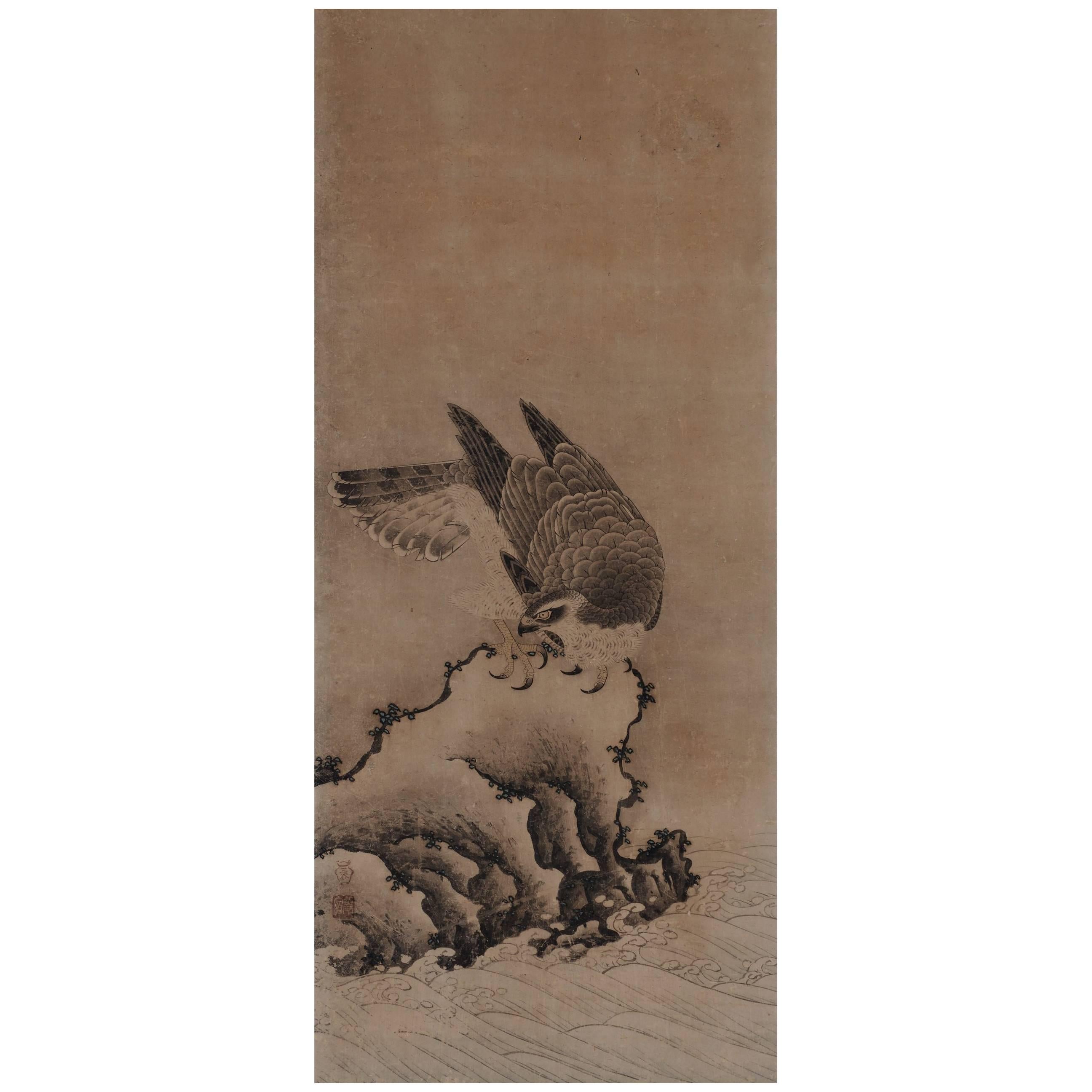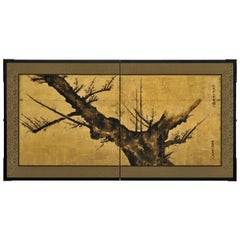
17th Century Japanese Screen, Ink Plum Blossoms by Priest Hozobo Kojo
View Similar Items
Want more images or videos?
Request additional images or videos from the seller
1 of 8
17th Century Japanese Screen, Ink Plum Blossoms by Priest Hozobo Kojo
About the Item
- Dimensions:Height: 25 in (63.5 cm)Width: 49 in (124.46 cm)Depth: 0.75 in (1.91 cm)
- Style:Edo (Of the Period)
- Materials and Techniques:
- Place of Origin:
- Period:Early 17th Century
- Date of Manufacture:circa 1620
- Condition:Refinished. Wear consistent with age and use. The screen has been fully conserved and remounted in Kyoto utilizing traditional craftsmen and techniques.
- Seller Location:Kyoto, JP
- Reference Number:1stDibs: LU2472321495352
About the Seller
5.0
Recognized Seller
These prestigious sellers are industry leaders and represent the highest echelon for item quality and design.
Established in 2001
1stDibs seller since 2016
60 sales on 1stDibs
Typical response time: 6 hours
More From This SellerView All
- 17th Century Japanese Screen. Ink Plum Tree & Birds by Kano Naonobu.Located in Kyoto, JPKano Naonobu (1607-1650) Plum Tree and Birds Six-fold Japanese Screen. Ink and slight color on paper. In this evocative ink work spread over a six-panel folding screen, we see the consummation of the elegance and refinement of the Edo Kano school. This 17th century screen is a rare surviving example of a large-scale bird and flower painting by Kano Naonobu, the younger brother of Kano Tanyu...Category
Antique 17th Century Japanese Edo Paintings and Screens
MaterialsWood, Paper
- 17th Century Japanese Framed Painting by Kano Sansetsu, Plum Blossoms in SnowLocated in Kyoto, JPKano Sansetsu (1589-1651) Plum blossoms in snow Edo period, circa 1640 Framed painting. Ink on paper. Kano Sansetsu is a Japanese painter who...Category
Antique 17th Century Japanese Edo Paintings and Screens
MaterialsPaper
- 17th Century Japanese Screen Pair by Soga Nichokuan, Hawks on Pine & Plum TreesLocated in Kyoto, JPHawks on plum and pine Soga Nichokuan (active circa 1625-1660) Pair of six-fold screens. Ink, mineral pigments, gofun, gold and speckled gold leaf on paper. Upper seal: H...Category
Antique 1640s Japanese Edo Paintings and Screens
MaterialsWood, Paper
- 17th Century Japanese Screen Pair, CranesLocated in Kyoto, JPCranes Anonymous, Kano School. Edo period, second half of the 17th century. Pair of six-panel screens. Ink, pigment gofun and gold l...Category
Antique 1670s Japanese Edo Paintings and Screens
MaterialsGold Leaf
$85,000 / set - 17th Century Japanese Screen Pair. Tiger & Dragon by Kaiho YusetsuLocated in Kyoto, JPKaiho Yusetsu (1598-1677) Tiger and Dragon Early Edo Period, Circa 1650 A Pair of Six-fold Japanese Screens. Ink and slight color on paper. Dimensions: Each screen: H. 171 cm x W. 380 cm (67.5’’ x 149.5’’) In this pair of early Edo period Japanese screens a group of tigers prowl in a bamboo grove whipped with fierce wind, while a dragon claws through clouds and mist. The dragon embodies elemental qualities - looming out of the mist, the coils of its body disappearing in the clouds. The dragon is calling for rain, symbolizing spring which is considered the fountain of life. On the other side, the tigers calls for the wind, symbolizing autumn which is considered the end of life. Tigers were familiar motifs within Japanese art from ancient times though the animals were imaginary to the people in the 17th century. While dragons and tigers are usually associated as sacred and ferocious, in this painting, both animals have rather amusing expressions. The tigers appear to glare at the dragon with cat-like eyes, and the look on the swirling dragon’s face appears almost affectionate - lending a playful flair to an otherwise magnificent theme. The tiger and dragon are cosmological symbols of the balancing forces in the world. Screens such as this were originally meant to express the fluctuating nature of the world. For Japanese in the early Edo period, they likely suggested the powers of the cosmos. In Japan the tiger and dragon motif was originally absorbed into the circles of Zen monasteries before spreading into the secular world. The theme especially appealed to the military classes with the Kano school, the official painters to the Shogun and the samurai, being the leading contributors. The painter of this pair of screens, Kaiho Yusetsu (1598-1677), was closely patronized by the third Shogun Tokugawa Iemitsu. In his later years he worked with Kano school artists...Category
Antique Mid-17th Century Japanese Edo Paintings and Screens
MaterialsSilk, Wood, Paper
- 19th Century Japanese Screen for Tea-Ceremony, Ink Bamboo and Plum on Gold LeafLocated in Kyoto, JPThree Friends of Winter Nakajima Raisho (1796-1871) Late Edo period, circa 1850 Ink and gold leaf on paper. This is a double-sided Japanese Furosaki or tea-ceremony screen from the mid 19th century; bamboo and plum on the front, young pines the back. It by Nakajima Raisho, a master painter of the Maruyama school in the late Edo and early Meiji periods. In this work Raisho combines exquisite ink brushwork with large open spaces of brilliant gold-leaf to inspire the viewers imagination. Rather than naturalism, he is searching for the phycological impression of the motifs, resulting in abstraction and stylization. His simplification of the motifs the result of looking to capture the inner nature of the objects. This art motif is known as Sho Chiku Bai, or the Three Friends of Winter. Evergreen pine connotes steadfastness, bamboo suggests both strength and flexibility, while plum blossoms unfurling on snow-laden branches imply hardiness. Combined, this trio is emblematic of Japanese new year. Chinese literati were the first to group the three plants together due to their noble characteristics. Like these resilient plants flowering so beautifully in winter, it was expected of the scholar-gentleman to cultivate a strong character with which he would be able to show the same degree of perseverance and steadfastness even during times of adverse conditions. The screen would have been placed near the hearth of a room used for the Japanese tea ceremony, shielding the fire from draughts and also forming a stimulating and decorative backdrop behind the tea utensils. It would have been used in the Hatsugama, or first tea-ceremony of the new year. Nakajima Raisho (1796-1871) originally studied under Watanabe Nangaku before entering the school of Maruyama Ozui. He was the highest ranking Maruyama school painter at the end of the Edo period and was known as one of the ‘Four Heian Families’ along with Kishi...Category
Antique Mid-19th Century Japanese Edo Paintings and Screens
MaterialsGold Leaf
You May Also Like
- 17th Century Japanese Two-Panel Screen, Gibbons of FolkloreLocated in Hudson, NYJapanese two-panel screen: Gibbons of Folklore, Edo period (17th century) Kano School painting of gibbons in Japanese fables. The left panel represents a Japanese fable of a monkey a...Category
Antique Late 17th Century Japanese Edo Paintings and Screens
MaterialsSilk, Wood, Paper
- Late 17th-Early 18th Century Japanese Six-Panel Screen, Battle at Uji BridgeLocated in Hudson, NYJapanese six-panel screen: Battle at Uji Bridge, the first battle at Uji was in 1180 and it marked the start of the Heike Wars. The Genji troops crossed the...Category
Antique Late 17th Century Japanese Edo Paintings and Screens
MaterialsGold Leaf
- Contemporary Hand-Painted Japanese Screen of Red Plum Blossom and BirdsLocated in 10 Chater Road, HKThe red plum blossom and birds painting of this two-panel screen is hand-painted in watercolor, on squares of gold leaf which are applied by hand to the paper base over carefully joi...Category
2010s Chinese Paintings and Screens
MaterialsGold Leaf
- Japanese Four-Panel Screen Four Fusuma 'Sliding Doors' with Venerable PlumLocated in Hudson, NYJapanese four-panel screen: Four Fusuma (Sliding doors) with venerable plum. Four individual fusuma (sliding doors), which can be hung together or separately. Signature and seal on f...Category
Antique Early 1800s Japanese Edo Paintings and Screens
MaterialsBronze
- Japanese Two-Panel Screen Ink Painting of Palm Trees on PaperLocated in Hudson, NYJapanese two-panel screen: ink painting of Palm Trees on paper, Edo period (1787) beautiful painting of Japanese windmill palm trees. Ink paint...Category
Antique 18th Century Japanese Edo Paintings and Screens
MaterialsPaper, Silk, Wood
- Japanese Two-Panel Screen Full Moon Through Plum OrchardLocated in Hudson, NYJapanese two-panel screen: Full moon through plum orchard. Taisho period (1912 - 1926) painting of a full moon shining through the craggy branches of plum trees. Wonderful painting s...Category
Vintage 1920s Japanese Taisho Paintings and Screens
MaterialsSilk, Wood
Recently Viewed
View AllMore Ways To Browse
Japanese Calligraphy Screen
17th Century Japanese Screens
Japanese Screen With Silver Leaf
Asian Window Screens
Tea Ceremony Screen
2 Panel Japanese Screen Screen
Japanes 2 Panel Screen
Japanese 2 Panel Screen
Edo Period Folding Screens
Plum Blossom Painting
Ancient Panel Japanese
Priest Japanese
Silver Leaf Folding Screen
Gold Silver Leaf Japanese Screen
Rinpa Screen
Tea Trunk
Japanese 2 Panel Screen Paper
Rinpa School



